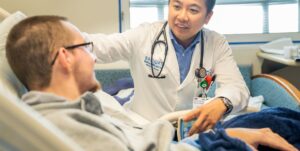The World’s Safest Helmet Concept: A Revolutionary Approach to Traumatic Brain Injury (TBI) Prevention
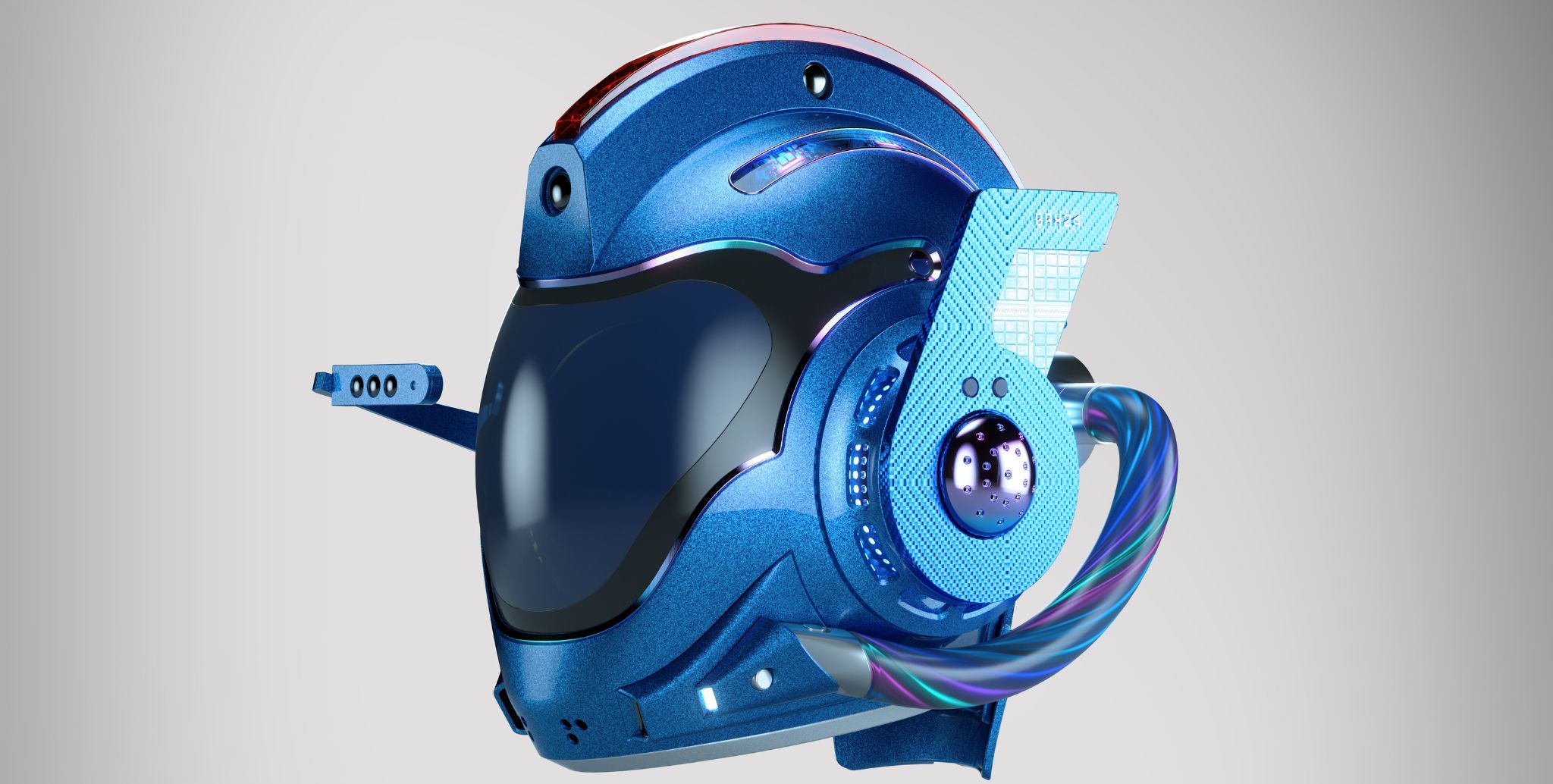
Back to physical health resource hub
Traumatic Brain Injuries (TBIs) are alarmingly common, affecting millions of people each year in the United States alone. According to the Centers for Disease Control and Prevention (CDC), approximately 1.5 million Americans sustain a TBI annually, leading to roughly 214,110 hospitalizations in 2020 and 69,000 deaths in 2021.1 These numbers only represent the reported cases; many milder TBIs, such as concussions, go unreported. Recreational activities—especially cycling, skateboarding and contact sports—are among the leading causes of TBIs, alongside motor vehicle accidents and falls.
Despite these sobering statistics, many people still underestimate the likelihood of sustaining a TBI, and even those who wear helmets may not be fully aware of the protection they provide—or don’t provide. While helmets can reduce the risk of severe head injury, no helmet guarantees 100% protection from all forms of TBI, especially when people are involved in high-impact sports or activities.
This is why Brooks Rehabilitation imagined the concept for the NeuroShield—raising awareness for the levels of protection the brain would, in theory, need to mitigate the risk of a life-changing injury.
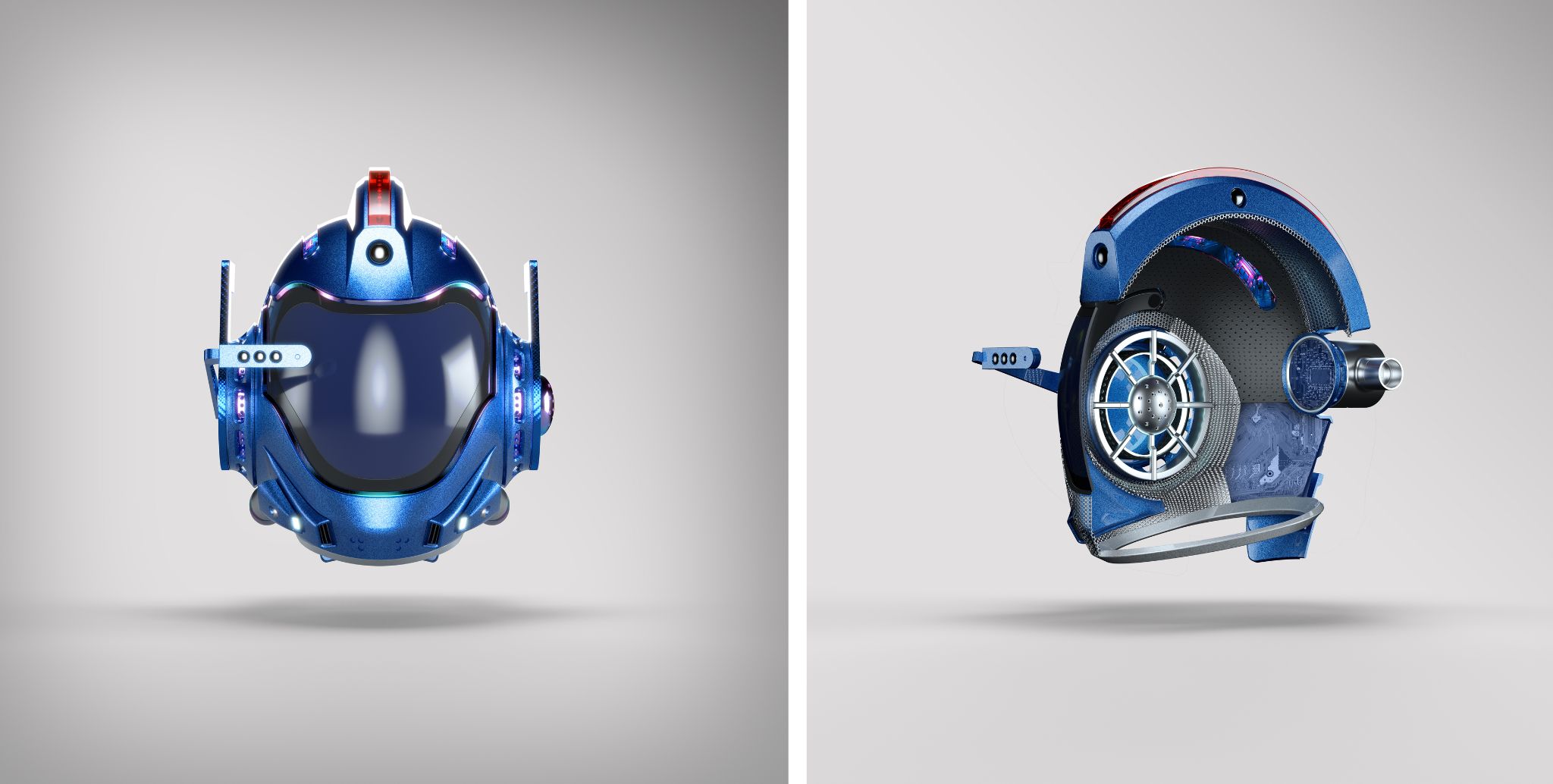
Based on expert insights from Brooks’ panel of TBI specialists, the hypothetical helmet featured a game-changing design packed with features to maximize safety. By providing an idealized visual representation of comprehensive head protection, Brooks hopes to educate the public on the importance of following head safety best practices.
Why Helmets Matter in TBI Prevention
TBIs occur when a sudden impact or jolt causes the brain to move rapidly within the skull. These injuries can range from mild concussions to severe brain damage, leading to short- and long-term health consequences. TBIs can happen to anyone, from children riding bikes in the neighborhood to adults participating in recreational sports. Despite the risks, many people neglect proper head protection.
Cycling, in particular, is a major contributor to TBI cases. In fact, bicycling leads to the highest number of sport and recreation-related emergency department (ED) visits for TBIs in the United States.2 Children and teenagers are especially vulnerable, often engaging in these activities without adequate protective gear, increasing the risk of serious head trauma.
Brooks’ new aims to tackle this issue head-on, emphasizing that with head protection, the risks can be significantly mitigated.
The NeuroShield Helmet: A Revolutionary Concept
Brooks devised this helmet concept not just as an innovation in head protection, but as a statement. The mock-up serves to emphasize just how much protection the brain, head and neck need and the serious effect traumatic brain injuries can have on people’s lives. By raising awareness of these risks, especially during recreational activities like cycling and sports, Brooks hopes to promote the importance of using protective equipment.
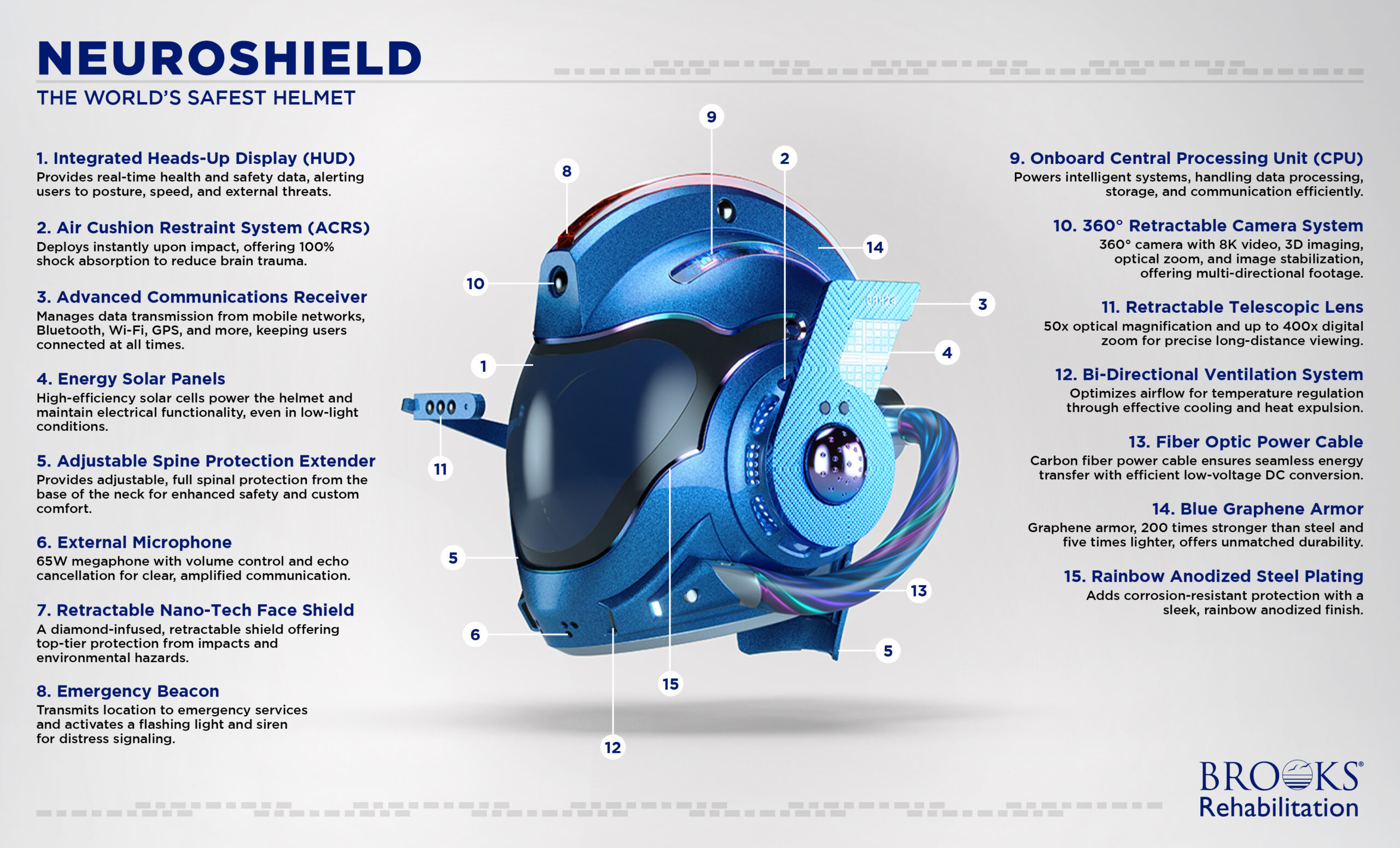
“TBI is an invisible epidemic,” says Trevor Persaud, DO, medical director of the Brain Injury Program. “With this hypothetical helmet, we’re driving home the point that no one is immune. A fall or a collision can happen to anyone, helmet or not—but with head protection, the consequences can be much less severe.”
The NeuroShield concept by Brooks would need to incorporate advanced technology and innovative materials to promise an unprecedented level of protection. Below is a breakdown of the vision for the helmet’s key design features:
- Visor with Integrated Heads-Up Display (HUD)
The visor would display real-time health and safety data to keep users informed and safe. When biking, it would alert the user when, for example, their posture, grip on the handlebars, or focus could put them at risk of injury. The visor design also features 360-degree camera feeds for situational awareness and keeps users informed of external factors, such as approaching vehicles or uneven terrain.
For sports use cases, such as football, the NeuroShield could alert the user of approaching players, providing insights on speed, proximity, and protection recommendations prior to an unavoidable impact.
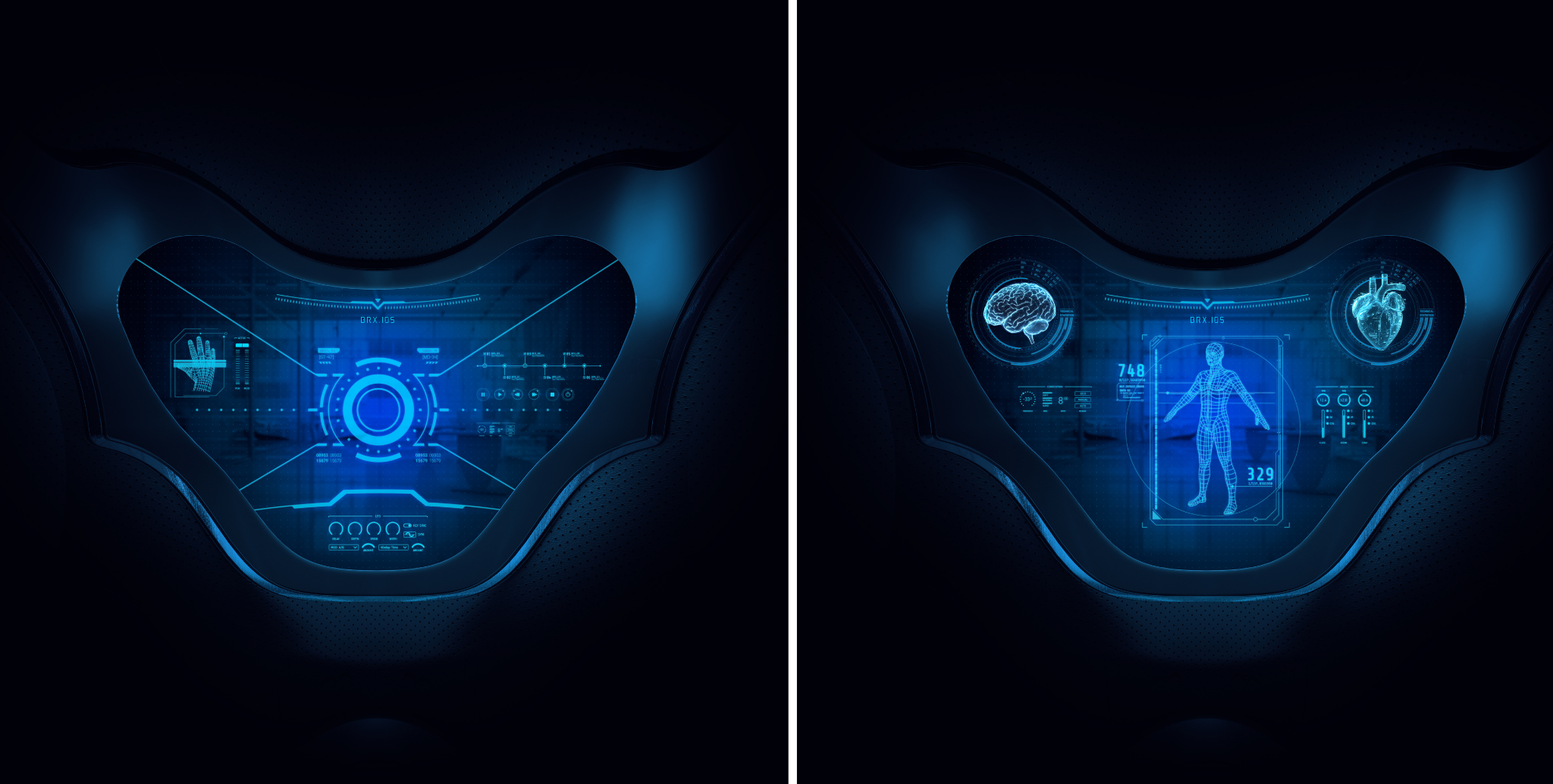
- ACRS (Air Cushion Restraint System)
Activated upon impact, air bags around the helmet would provide ultimate cushioning to reduce trauma to the head. The air bags were designed to act as an additional layer of sophisticated internal cushions, effectively absorbing 100% of the shock following an impact, where the helmet stops but the head tries to keep moving.
In addition, the interior of the helmet features an absorbent liner to dampen the impact and decrease the quick deceleration that causes the brain to bruise against the skull.
- Fusion Energy Solar Panels
The helmet concept would be powered by high-efficiency solar panels, ensuring that its electrical features remain functional even in low-light conditions. The panels would be highly durable and efficient, offering uninterrupted protection.
- Retractable Face Shield
Using nanotechnology, the face shield could be activated to deploy a protective layer made of diamond-like carbon, one of the toughest materials known to man. This feature adds extra defense for the face in the case of a fall or collision.
- Spine Protector Extension
The NeuroShield design doesn’t just protect the head. A spine protector would extend from the base of the helmet to protect the neck, something that traditional helmet designs lack. This would ensure that the helmet minimizes damage to the brain as a result of spinal cord injuries (SCIs), as well as shielding against whiplash and neck injuries, both of which are common side effects of a serious fall.
- White Graphene Armored Casings
The helmet’s outer shell would be made of white graphene, a revolutionary material that’s 200 times stronger than steel. It’d be incredibly lightweight while offering unmatched impact resistance. This—paired with a state-of-the-art foam padding and cushion system inside the helmet—would provide protection to the head by absorbing and dispersing all force following an impact.
- Onboard CPU and Emergency Beacon
In the event of a crash, the helmet’s built-in CPU would trigger an emergency beacon, sending the wearer’s location to emergency services and family members. When activated, the helmet could emit a bright flashing light and audio siren, so the user is visible in low-light conditions or hard-to-reach areas. This feature could save lives, especially in situations where immediate help is critical.
The Impact of TBIs on Health: A Life-Altering Injury
The effects of TBI can range from mild, such as short-term headaches and dizziness, to severe, causing long-term cognitive, emotional, and physical impairments. Children are especially vulnerable, as their developing brains are more sensitive to trauma. As a result of a TBI, children may experience changes in their health, thinking, and behavior that affect learning, self-regulation, and social participation, all of which are important to becoming a productive adult.3
Adults are not immune either. In fact, repeated TBIs, especially in sports, can lead to conditions like cerebral contusions, second-impact syndrome concussions, and chronic traumatic encephalopathy (CTE), a neurodegenerative disease caused by repeated head injuries. This condition is most commonly seen in athletes like football players, boxers, and hockey players.
TBI Prevention Tips: Stay Safe, Stay Smart
When it comes to preventing brain injuries, Brooks’ TBI experts emphasize that even small precautions can make a big difference in protecting both adults and children. Whether participating in recreational sports, cycling, or other physical activities, taking proactive steps can significantly reduce the risk of TBIs.
Below are some expert-recommended tips and best practices to help minimize the risk of brain injuries in day-to-day activities:
- Wear a Helmet: Always wear a helmet when participating in activities like biking, skateboarding, and contact sports. Make sure the helmet fits properly and is certified for safety standards.
- Follow Safety Rules: Obey traffic signals, use bike lanes, and be aware of your surroundings. This applies not only to adults but to children as well. Establishing good safety habits early can make a big difference.
- Teach Children About Safety: Instilling the importance of protective gear and safety measures in kids can be lifesaving. Lead by example by wearing a helmet and practicing good safety habits.
- Supervise Children in High-Risk Activities: Always supervise young children during activities that could result in head trauma. This can help prevent accidents before they happen.
- Make Sure Gear Is in Good Condition: A helmet is only effective if it is in good condition. Regularly inspect your helmet for cracks or damage and replace it after any significant impact.
- Reduce the Risk of Falls: Follow fall-prevention best practices, such as installing window guards and safety gates at the top and bottom of stairs, improving the lighting and eliminating trip hazards in your home, and using nonslip mats in the tub or shower.
- Limit Contact Sports: Consider participating in non-contact sports and recreational programs, such as flag football. If that is not possible, reduce the number of contact practices per week or the amount of contact time during the activity or practice.
Conclusion
Brooks’ NeuroShield helmet design isn’t just a product concept; it’s a call to action. By showcasing what the world’s safest helmet could look like in theory, Brooks hopes to inspire both individuals and industries to prioritize safety in recreational activities and boost their levels of protection. TBIs are common but preventable, and with the right safety measures and public awareness, people can better protect themselves from the life-altering consequences of head injuries.
“Prevention is key,” concludes Persaud. “No helmet is 100% injury-proof, but this helmet represents what level of safety is possible when we combine modern technology with our knowledge of TBIs. It’s more than just a helmet—it’s a promise to protect our brains, our most valuable asset.”
For more information on TBI prevention and rehabilitation, please visit our Brain Injury Rehabilitation Program page here.
References
- Centers for Disease Control and Prevention. National Center for Health Statistics: Mortality Data on CDC WONDER. Accessed October 2024, https://wonder.cdc.gov/mcd.html.
- Coronado VG, Haileyesus T, Cheng TA, et al. Trends in sports- and recreation-related traumatic brain injuries treated in US emergency departments: the National Electronic Injury Surveillance System-All Injury Program (NEISS-AIP) 2001-2012. J Head Trauma Rehabil 2015;30:185–97. https://doi.org/10.1097/HTR.0000000000000156 PMID:25955705
- Centers for Disease Control and Prevention, National Center for Injury Prevention and Control. Report to Congress on the management of traumatic brain injury in children. Atlanta (GA): Centers for Disease Control and Prevention; 2018.

